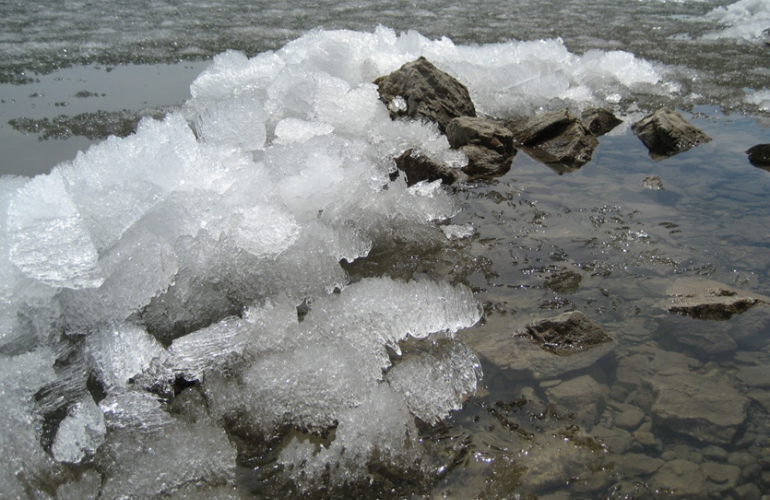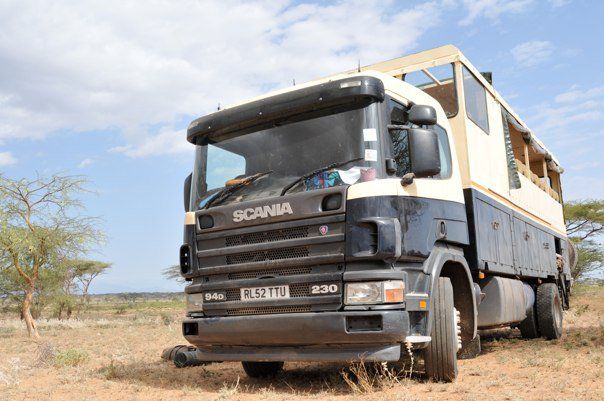Itinerary | Ashgabat, Turkmenistan to China
People and History
The Silk Road; the trade route where Marco Polo travelled, writing his famous ‘Book of the Marvels of the World’
More correctly its ‘Silk Routes,’ a term coined by Ferdinand von Richthofen (uncle of the fighter ace Red Baron), naming the trade routes from China to Turkey – and on to Europe. The name does not refer to a road or specific route, as the trade was also undertaken by sea as well as land over vast distances. The route was disrupted during the rise of the Mongol Empire but was reinvigorated by sail during the rise of the European powers and is running again today – by ship, road and rail.
People and Religion
The region has every significant religion in the world, living in relative harmony, including; Muslim [Shiites, Sunnis & Sufis], Jews, Orthodox Christians, Zoroastrians, Buddhists, Shamanists Confucianism, Taoism – and others
Architecture
Big grand mosques, mud cities, palaces, fortresses and ruins. Desert architecture using the wind and water in ways to keep houses cool which predates western air-conditioning systems by thousands of years – by using natural flows of wind and water in complex systems, all built by hand. The systems of cooling and water supply are still unmatched by modern western environmentalists using computers and heavy machinery.
And of course, no need to mention the Great Wall of China – it’s actually a series of defensive walls which doubled as immigration and tax control barriers. They were started in 200BC till 1600 AD. The walls have been found to be over thirteen thousand miles long: built in series of or layers of defence over almost two thousand years. The walls slowed but not stop the Mongol horseman from invading, though they managed to do this by using Chinese people using contemporary techniques to breach the walls.
Geography
Central Asia has, the Karakum, amongst other deserts, with vast grassy plains of the Steppe to the north; running into the forests and mountains high rolling plains and lakes of Kyrgyzstan towards China in the east
Uzbekistan is only one of two ‘doubly landlocked’ countries in the world – that is, it’s surrounded by landlocked countries. China has mountains, grassland and the Gobi Desert
Animals
Bactrian camels – (two humps) and lots of horses. Mongolian death worms, hard to find
The Asia Overland Route – Ashgabat to Beijing, China
CENTRAL ASIA – Turkmenistan, Uzbekistan, Kyrgyzstan & Kazakhstan
Horses been ridden by a nations of horsemen with incredible skill on the saddle – they can ride alone before the age of five.
Turkmenistan – Week 1
The capital city Ashgabat made in white marble. The rest of the country is a beautiful empty dessert, with nomads in their yurts. The economy is run off its vast reserves of oil and gas which lies beneath Central Asia’s largest desert; the Karakum or Black Desert.
Highlights – Ashgabat, Darvaza Gas Craters, Konye-Urgench
We go off road to visit the Yangykala Canyons and the white cliffs of Koymat, and along the banks of the old Uzboy River, before reaching the desert settlement of Melegoch, in the dunes.
Then to the capital Ashgabat, with enormous monuments and extravagant buildings made entirely of white marble.
We visit Darvaza Gas Craters, or the ‘Doors to Hell’, it’s a drilling operation gone wrong, which opened a massive hole in the desert; from which the natural gas came. it was lit to get rid of the dangerous gas and it’s been burning for 40 years.
Kanye-Urgench on the northern border is a ruined town, with old monuments. Is was the scene of one of the biggest massacres in human history by Genghis Khan; this start of his killings led to the death of over 70 million people; some 17% of the world population
Uzbekistan – Week 2-3
The heart of the ancient Silk Road
Highlights – the beautiful cities of Khiva, Bukhara and Samarkand are the main highlights not only Uzbekistan but of the whole of Central Asia
Khiva town is one of the best preserved of the in Central Asia the Old Town is within a massive mud brick fortress. Climb the towering minarets and sit in the tranquil old mosques. We cross the desert and the Amu Darya River, (known in ancient times as the Oxus), to Bukhara. Its old centre with easy to get lost in narrow winding streets, mosques, medieval royal fortress and a bazaar complex; its a UNESCO World Heritage Site. Samarkand was once the most populous city in the world; its 2,500 years of history old rivaling Rome in importance; now its attractions are large colourful mosques, markets and the impossibly big public square called ‘Registan’ or sandy place in Persian. This was made when public squares were for public announcements and executions.
Time allowing we visit the UNESCO Town of Shahrisabz. Here still standing since 1380 – the original gate towers to Timur’s Summer Palace.
Tajikistan – Week 4
Dushanbe is Tajikistan’s largest city, with beautiful parks, fountains and the wide boulevards and grand buildings.
We drive north in to the Fann Mountains, one of Tajikistan’s great ranges, with high snowy peaks to Iskander Kul Lake. It is said to be the resting place of Alexander the Greats horse, Bucephalus. The glacial lake is a stunning spot for a hike and we aim to visit Tajikistan’s highest waterfall.
Continuing north we arrive in toKhujand – the furthest points reached by Alexander the Great. It is said in this area that he wept, saying he had no further territory to conquer. We visit the Fortress and Panjshanbe Market – the largest covered markets in the region.
Kyrgyzstan – Week 5
A land of high mountain passes, grassy plains, alpine lakes & yurts, all in the Celestial Mountains. The beginning for us of a strong Chinese influence.
Highlights – Osh High altitude Lake Song Kol, Fergana Valley and Ala Archa National Park.
As big as England with just 5 million people; there is space to wander. We visit the capitol Bishkek You can go walking and horse trekking around Lake Issyk Kul.
In Kyrgyzstan our first stop is Osh, a 2,000 year old city, with a grand bazaar, a major stop along the ancient Silk Road.
We visit the vast red stone cliffs in Jeti Orguz or ‘Seven Bulls’ and visit the town of Karakol with its beautiful Russian wooden houses and tree-lined streets. Nearby are the Terskay Ala Too Mountains, a wilderness with nomadic shepherds.
Continuing around the lake to Semenovskre Gorge you can go walking and follow the rivers that wind through the national reserve.
On to Ala Archa National Park; forests, glaciers and alpine streams to camp amongst the nomads in their yurts.
Kazakhstan – Week 6
To Almaty, Kazakhstan’s old capital, in the foothills of the Trans Lli Alatau mountains, the city has many sights – Ascension Cathedral, Abay Opera House; Golden Warrior Monument in the Republic Square and the Almaty Tower
Kyrgyzstan – Week 7
We return to Kyrgyzstan and Lake Issyk-Kul, in the northern Tien Shan Mountains. The region of Altyn Arashan and its surrounds has hiking and horse riding trails and we spend a few days here to take in the amazing scenery.
We visit the vast red stone cliffs in Jeti-Oguz and visit the town of Karakol with its attractive houses and tree-lined streets. Behind it are the Terskay Ala-Too Mountains, an unspoilt wilderness populated only by nomadic shepherds. Continuing around the lake to Semenovskre Gorge to hike along rivers that wind through the national reserve.
China – Week 8-9
China invented everything we like; Chinese food, chopsticks, fireworks, goldfish, tea, toilet paper, kites, paper money and hundreds of other things.
Highlights – Kashgar, Taklamakan Desert, Turpan Oasis, Gobi Desert, Yellow River, Chengdu city, Giant Pandas, Xi’an Terracotta army.
We cross the border to China by the Torugat Pass to high plains with nomadic Kygys people with their yurts and horses. Kashgar – a major trading point on the Silk Road. Big bazaars, markets and old tombs.
We take the train to Jiayuguan Fort, built in the Ming Dynasty is the westernmost section lies The Great Wall of China spreads across a great many parts of the country.at the walls most western end
Into the Taklamakan Desert – a dry massive desert of slowly moving sand. We spend a few days on the northern edge of this long desert.
To Kuqa and the Kizil Thousand Buddha Caves, these caves were carved into the cliff face over a period of 1,700 years; all overlooking the Muzat River, a broad river running through this dry country.
On to the ruins of Turpan, a revitalized oasis town, hot weather and good irrigation produces trellised vine s and the best grapes and raisins in the world. On a nearby plateau are the ruins of Jiaohe; a city destroyed by the Mongols under Genghis Kahn.
We cross the Gobi Desert visiting oasis towns of Dunhuang to visit Ming Sha Hill and the Crescent Moon Pool. Spring water flows into a depression between huge sand dunes, forming a picture postcard crescent-shaped lake.
Through the Gampala Pass to visit Yamdrok Tso Lake, to Lhasa to catch the high altitude train to Lhasa. A classic two day train journey at high altitude.
Lhasa, Tibet is one of the highest cities in the world. We will take time to acclimatise to the altitude. We explore Lhasa, with our guide to; Jokhang Temple, Barkhor Square and the stunning Potala Palace. We hope to also visit the Sera Monastery.
We cross the mighty Gampala Pass and see Yamdrok Tso Lake surrounded by snow capped peaks and in the distance, and on a clear day, you can see Holy Mount Nyenchen Khangsar.
On arrival in Shigatse we visit the home of Panchan Lama – Tashilunpo Monastery, built by the Dalai Lama. We visit Rongbuk Monastery, the highest in the world. From here we can see Mount Everest. We visit Mount Everest Base Camp hoping for a glimpse of the peaks, before driving to Tingri, a stopping point on the Friendship Highway.
We continue on the Friendship Highway to Gyantse, where you can visit Pelkor Chode Monastery and Kumbum Stupa and on to Gyantse.
We recross the mighty Gampala Pass, with time to visit Yamdrok Tso Lake, before heading back in to Lhasa to catch the high altitude train to Chengdu.
Chengdu is our massive city in China with around 14 million people – the capital of Sichuan province, the home of the spicy Chinese food. The Giant Panda breeding centre is here, to see the baby bears up close. The film Kung Fu Panda was set in this city. It’s an attractive modern city and worthwhile spending time to wander around, and to visit the Wuhou Temple & Wenshu Monastery.
To Xi’an and the Terracotta Warriors; 8,000 life size terracotta soldiers and horses lay buries for 2,000 years. They are all unpainted as when they are unearthed and exposed to the air, within just two minutes the ancient colourful paint job fades and flakes off. Also, you can see a relic of the Buddha, a finger bone at Famen Temple.
From Xi’an to Beijing by a full days train ride – We see the Great Wall of China and reach Peking where the best things to see are Tiananmen Square and the Forbidden City or Palace and Temple of Heaven.

